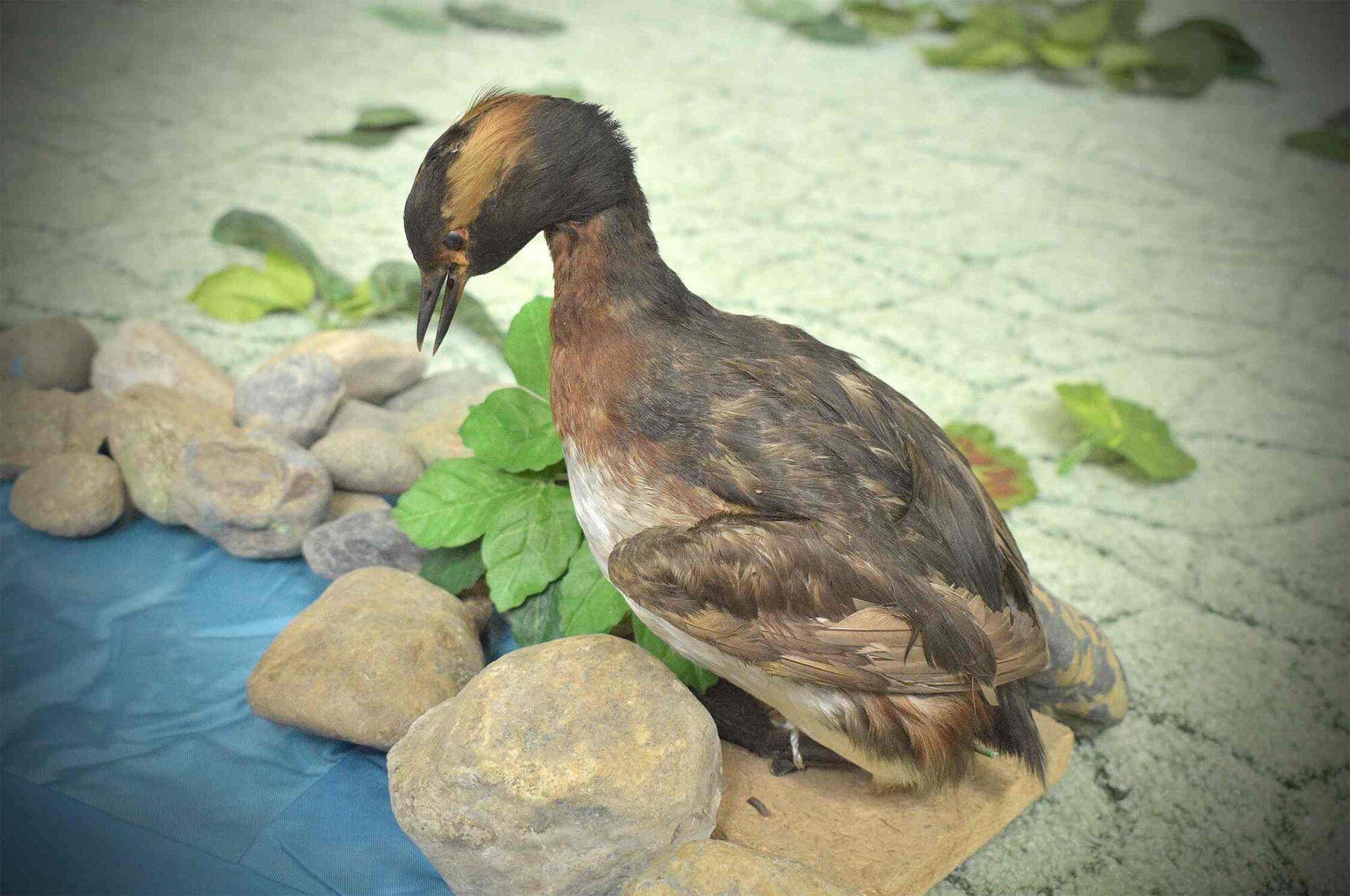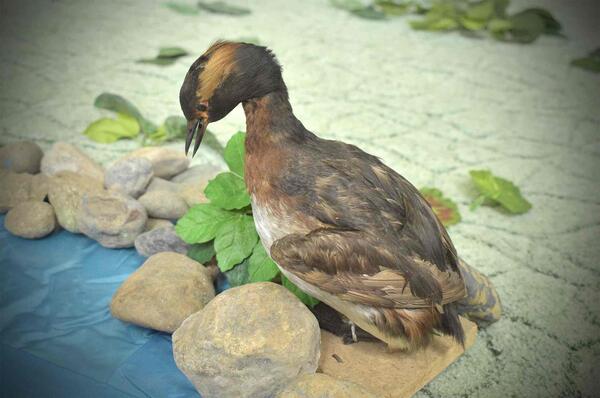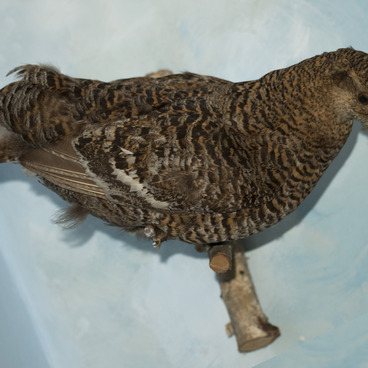The great crested grebe is common to practically all the regions of Eurasia. Its natural habitats include lakes and ponds. The bird uses water bodies with a large amount of vegetation, i.e. reeds and bulrush, as its breeding grounds. It is important for it that there are slow or no currents in these water bodies.
Great crested grebes primarily eat fish. In addition, they also consume frogs, shellfish and aquatic insects.
These birds have an excellent eyesight. They can spot a fish swimming deep in the water and dive in, moving only their feet, with wings held at their sides to depths of up to 4 meters.
The mating season of great crested grebes starts in April through May. Both males and females grow new feathers during this period, and tufts appear on their heads. They also have spectacular dark orange or cherry-burgundy ruffs around their necks during the breeding season.
At such times of the year, females cry out loudly, thereby attracting males towards them. Potential partners approach these females with presents, such as freshly caught fish, which the latter eat immediately. Females choose their partners during a dance ritual. Afterwards, each pair begin building their nests using vegetation available in the water body. The male takes on a more active role during the construction. It brings materials necessary for building the nest, i.e. bits of bulrush, twigs, aquatic weeds and leaves. The couple try to construct their abode closer to bulrush. The floating nest has to be sufficiently sturdy and spacious.
The female lays up to 7 snow white eggs. If a threat arises, it hastily covers up the nest with plants before leaving it. In 27 to 29 days, the eggs hatch. The barely dry newborns then leave their nest. They are able to swim and dive well in the first days of their lives. Their striped pre-pubescent plumage helps them hide among thick reeds.
Parents transport the young on their backs for up to the first three weeks of their lives. Initially, they feed their offspring fish and small aquatic creatures. Ten to eleven weeks later, the young birds require less care and start to become more independent. Under favorable conditions, a pair of great crested grebes can have two clutches a season.
Great crested grebes primarily eat fish. In addition, they also consume frogs, shellfish and aquatic insects.
These birds have an excellent eyesight. They can spot a fish swimming deep in the water and dive in, moving only their feet, with wings held at their sides to depths of up to 4 meters.
The mating season of great crested grebes starts in April through May. Both males and females grow new feathers during this period, and tufts appear on their heads. They also have spectacular dark orange or cherry-burgundy ruffs around their necks during the breeding season.
At such times of the year, females cry out loudly, thereby attracting males towards them. Potential partners approach these females with presents, such as freshly caught fish, which the latter eat immediately. Females choose their partners during a dance ritual. Afterwards, each pair begin building their nests using vegetation available in the water body. The male takes on a more active role during the construction. It brings materials necessary for building the nest, i.e. bits of bulrush, twigs, aquatic weeds and leaves. The couple try to construct their abode closer to bulrush. The floating nest has to be sufficiently sturdy and spacious.
The female lays up to 7 snow white eggs. If a threat arises, it hastily covers up the nest with plants before leaving it. In 27 to 29 days, the eggs hatch. The barely dry newborns then leave their nest. They are able to swim and dive well in the first days of their lives. Their striped pre-pubescent plumage helps them hide among thick reeds.
Parents transport the young on their backs for up to the first three weeks of their lives. Initially, they feed their offspring fish and small aquatic creatures. Ten to eleven weeks later, the young birds require less care and start to become more independent. Under favorable conditions, a pair of great crested grebes can have two clutches a season.



